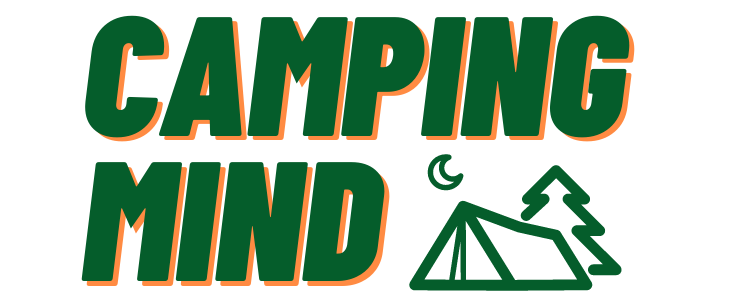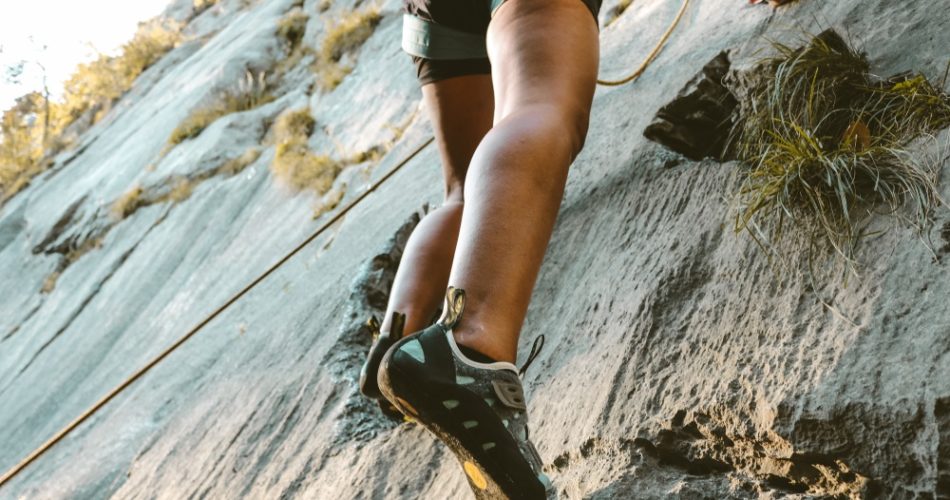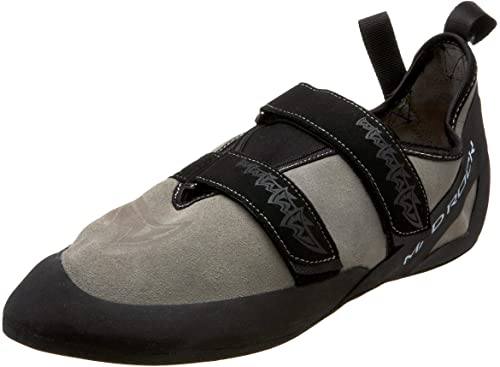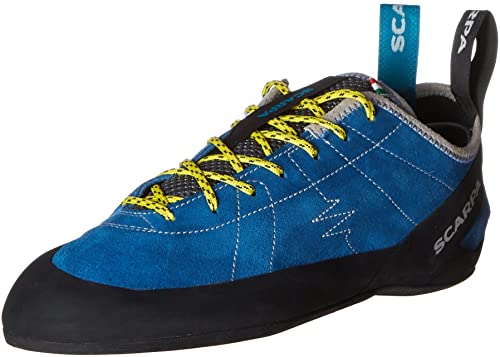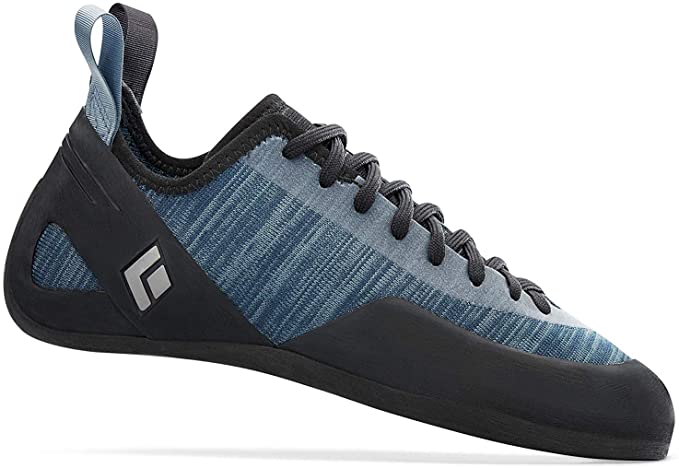Indoor or outdoor rock/wall climbing is a fun pastime activity that just about anyone and everyone can get into. One thing we can’t all get into would probably be affording the high-end climbing shoes that the professionals use so that we would settle for some of the best budget climbing shoes we can find in 2024.
Trust me, finding great cheap shoes for all feet sizes, especially big feet, can be quite tricky because of the market’s saturation with climbing shoes of all sizes, brands, and price tags.
I found a way to make this seemingly complicated task a little bit easier, especially for the beginners who most likely have not gone shopping for climbing shoes before. I accomplish this by making a concise top 5 list of climbing shoes and include a buyer’s guide section that comprises features to keep in mind when looking through catalogs and specifications.
The 5 Best Budget Climbing Shoes Available in 2024
1. Mad Rock Drifter
The drifter from Mad Rock sits comfortably at the top of this list, not because the other shoes on here are bad, but because it’s just that great. It is an all-round shoe that balances catchy simplistic esthetics and optimal durability while not trading it in for comfort.
It is comfortable on a wide variety of terrains, including slabs and technical face climbing. It is also strong enough to last you as long as you need to find an upgrade when you decide one is necessary.
Perhaps the most impressive aspect of these climbing shoes is their price. It comes with a very affordable price tag while giving you a bang for every single buck. For indoor climbers and beginners, you definitely cannot go wrong with the Mad Rock Drifter.
Pros
- Sensitive soles
- The lined toe box provides maximum comfort
- Leather uppers allow high breathability
- It can be resoled
Cons
- Only velcro models
Takeaway
With the Mad Rock Drifter’s velcro straps for ease of use and the soles that are hard enough to provide durability and grip, it is easily the best rock climbing shoe for beginners.
2. Scarpa Helix
The SCARPA Helix comes second on my list because of the generally positive reviews it received from professional reviewers. I also had a great personal experience with it while searching for rock climbing shoes, but I didn’t use them long enough to test their durability personally.
The SCARPA Helix has a pretty simplistic but esthetically pleasing appearance with an Ultra-sticky high-quality sole, which would definitely make you question the low price attached to it.
They generally work best in beginner vertical terrains, slabs, and moderate cracks. The SCARPA Helix also found a way to perfectly balance sensitivity and support, which encourages improvement in footwork, which is necessary for advancement as a beginner.
Pros
- Ultra-sticky soles
- Versatile
- High value for money
- Minimalist design
Cons
- Not suited for overhangs
Takeaway
The SCARPA Helix found a way to balance most of the higher-end features in a compact and durable unit. So, as long as you’re a beginner, I can’t see how you’d go wrong with the SCARPA Helix.
3. La Sportiva Finale
The Italian manufacturing company; La Sportiva is already notoriously known for its impressive climbing shoes across all budget brackets. I absolutely had to include one of their most popular models, “finale,” on here.
The Finale has that simplistic outlook that La Sportiva shoes are known for. It also has just the right combination of comfort, versatility, and function. Its interior was unlined, and it had the right balance between stiffness and flexibility hence a balance between durability and grip, respectively.
It performed optimally on slabs, edges while also providing an adequate performance on steeper climbs with an exceptional sensitivity. Even though not optimally, it can even work for professionals as I found it capable of ascending cracks.
Pros
- Highly versatile
- Simplistic yet durable build
- Sensitive soles
- Leather exterior
Cons
- Breaking in time was a bit long
Takeaway
The La Sportiva Finale is such a great shoe once you look past the additional breaking in time. It serves a wide variety of functions while still sitting comfortably in the budget range.
4. Mad Rock Flash
This is the second product on here from Mad Rock. And on a list of only five items, I find that pretty impressive. The Flash 2018 stood out in almost every criterion in the budget climbing shoe category.
The Flash 2018’s interior is spacious, providing comfort while on the terrain. The build is a bit more aggressive than the flatter shoes, which trades in a little bit of comfort for the grip, particularly on steep slopes (the best on this list for steep climbs)
They work swimmingly well on most terrains like steep terrains and gym boulders but are kind of uncomfortable for long sport climbs and vertical to slabby terrains.
Like I stated previously, the major downside to the Flash 2018 is the low comfort features. To be honest, I found these quite painful after wearing them for long sport climbs, mostly because I have pretty medium-sized feet (it would be more comfortable for the big-footed individual).
Pros
- Rugged build
- The best budget shoe for steep climbs
- Pretty high value for money
Cons
- Uncomfortable after prolonged use on slabby terrains
Takeaway
As long as you don’t intend to carry out prolonged climbing sessions on slabby or vertical terrains, the Mad Rock 2018 is right for you, especially if you plan to tread steep terrains.
5. Black Diamond Momentum
Black Diamond is a relatively new climbing shoe manufacturer, but they definitely didn’t let the other companies intimidate them. They showed this most with the Black Diamond Momentum budget climbing shoes by incorporating a new “knitted” fabric (not leather, not synthetic) that allows for far more breathability than the others.
This is a beginner climbing shoe with just the right price tag. In fact, some would argue that the value far exceeds the price, and they may be right. The previously mentioned knitted fabric and the premium rubber soles are just a few features that would be used to make their point.
The Black Diamond Momentum performs well on face climbs and overhangs, but you may experience a little difficulty when ascending slabs and roofs.
Pros
- Knitted fabric for higher breathability
- Hard rubber soles mean higher durability
- Bang for buck
- Versatile
Cons
- Not so great for slabs and roofs
- The sensitivity could be higher
Takeaway
The Momentum from Black Diamond became a head-turner for budget climbers for a good reason. As long as it fits you correctly, the Black Diamond Momentum might be the right beginner climbing shoe for you.
What to Keep in Mind When Buying Budget Climbing Shoes: A Buyer’s Guide
By now, you have seen my recommendations for the best sport climbing shoes, and you have two options. One is just picking out the one that suits your taste and needs the most from the list above. The second option would be to read through the buyer’s guide section to increase your knowledge on the purchasing criteria that all the shoes in my list had to pass through to make a more informed decision.
The truth is, the buyer’s guide section was explicitly tailored for novices looking for the best rock climbing shoes for beginners and have little to no idea about the world of climbing shoes. That being said, I also feel the intermediate and even seasoned climbers would stand to gain from the information provided in this guide. After all, no knowledge is wasted.
Look out for the following when on the market for climbing shoes, particularly the best budget climbing shoes in 2024:
Upper Material
The material that makes up the upper part of the climbing shoes varies and can be leather, synthetic, or knitted. Each of these materials has its unique properties, and the final decision would be made depending on your preferences and experience.
Leather
Leather shoes are more like the industry standard for climbing shoes. As a rule, they stretch out over time (unless their interior is lined with a non-stretchy material), so I’d advise that your leather shoes be purchased in size half a size or one full size smaller than your regular walking shoes. This is because they would eventually stretch to size after a variable break-in period.
Dyed leather shoes may stain their feet, which can be a turn off for some folks. All leather shoes are more comfortable and durable than their synthetic counterparts but may be more expensive or at least be moderate climbing shoes.
Synthetic
Unlike leather shoes, the shoes with a synthetic build stay true to their size and do not undergo the mandatory stretching over time (at least not as much as shoes with leather uppers do). So, if you decide to purchase synthetic shoes, you should stick with one of your size or at most half a size smaller.
Synthetic shoes also tend to be less comfortable because there’s less ventilation, which may lead to your feet getting sweaty faster than with the leathers.
Hybrid
Some shoes decided that they could eat their cake and still have it. The hybrid shoes have uppers that are made up of a variable combination of synthetic and leathers. This gives rise to a climbing shoe that stretches only a little over time while giving your feet ample comfort and ventilation.
Closure Mechanism
The mechanisms by which your climbing shoes close up may be an important deciding factor to you – velcro, laces, slip-ons. Like the build material, the final decision on what closure type to go with would be based on your personal preferences. The good news is that most shoes that I recommended come in both velcro and laced-up versions.
Velcro
Velcro has the advantage of being extremely easy to take on and off, which can be very important during indoor climbing. The major downside to using velcro climbing shoes is that they are less customizable, as you can only adjust the straps as far as the velcro material lets you.
Also, velcro materials tend to wear over time and hence lose their grip, which can cause loosening of the straps while on the trail or up the wall. However, as a beginner, when hardcore climbing isn’t your thing, and you mainly stick to bouldering and indoor rock climbing, velcro closures may be right for you.
Laces
Laces offer a wider range of customizability, allowing you to adjust your shoes’ tightness based on your comfort and performance requirements. Sounds perfect, right? Well, not really.
The laced-up shoes tend to be more challenging to put on and take off, which may be inappropriate in an indoor gym setting where that’s what you’d be repeatedly doing. The laces may also break over time and may be pretty tasking to replace altogether. So, lace-up shoes are more suitable for the slightly more experienced climbers who primarily carry out outdoor crack climbing.
Slip-ons/ Elastic
Slip-ons do not have any specific mechanism for closure, as they just use an elastic band around the shoe opening that lets you slip in and out of the shoes without any form of stress or technicalities. This would make it perfect for indoor climbing, and in addition to the comfort features it offers, it’s also a perfect fit for outdoor crack climbing.
The elastic in the shoes, however, stretch over time. This stretch may vary from just a small amount to a considerable degree that you need to get shoes that are up to a size smaller than your feet initially. This leads to an uncomfortable break-in time that not everyone wants to deal with.
Sole’s Rubber
The nature of the rubber that makes up the sole plays a very big role in most sports, but its importance can literally not be overemphasized in climbing shoes. As a rule, softer rubber translates to more grip, which is a good thing for climbers, but it also means that the sole would wear out faster than harder rubber soles.
As a beginner, it would be best to purchase the shoes with the best rubber soles that your budget can afford. This would mean getting a thick (>4mm) and hard-soled shoe. This would provide higher durability while maintaining a reasonable level of grip. However, as you gain more experience and seek out harder climbing tasks, you may want to get softer-soled shoes.
Fit
Selecting the fit/size of climbing shoes is a lot trickier than doing the same for your typical walking street shoes. Climbing shoes need to be tight, so much so that they make your toes curl. This position of your toes and overall tight fit aid greatly in climbing because the last thing you want while on a vertical climb is one or both of your shoes slipping off.
That being said, you would also want to put comfort at the back of your mind when selecting your shoe size. This is important for beginners because excessively tight shoes can deter you from this fun hobby just because of the fear of pain. So, the big-footed individual should go for big shoes and vice versa.
As a rule, beginners should stick to about half a size less than their regular street walking shoes (up to one size less in leather shoes and/or slip-ons), and as time goes on and you master the craft a bit more, you can drop sizes even more as long as it still stays within your comfort range.
Cost
To be totally honest, the more you’re willing to spend on climbing shoes, the better quality you can attain. This may seem like a weird statement to make in an article about budget sporting gear, but it had to be said.
Now that that’s out of the way, as a beginner, you don’t need the high-end, $1000+ shoes that would poke a hole in your wallet before you even decide you want to take up the sport entirely.
All you need to do is pick out one of the cheap climbing shoes and work on your form and technique, and over time, if you decide you want to continue with the sport a bit more seriously, you would have to get an upgrade, and you would immediately tell the difference.
FAQs
What size climbing shoes should I buy?
I really don’t have a definite answer for this, but here’s a general rule I use: as a beginner, you should wear shoes that are about half a size to one full size smaller than your regular walking boots are.
How much is too much to spend on climbing shoes?
If you’re climbing at an indoor gym and you want to rent a pair of their climbing boots, it should cost an average of $10-$15 for a session. And if you’re a beginner climbing on a budget, you can get pretty decent climbing shoes within the $100 price range. If you’re more liberal with your budget, you can get a decent pair of shoes for an average of $170 and above.
Why are rock climbing shoes so expensive?
I’m pretty sure you’ve been shocked at some point for how pricey some climbing shoes can be. This is mainly because most of them are made by hand, and they make use of unique rubber soles that are hard enough to resist wear from the rocks while also being soft enough to prevent slipping on the walls.
Should my toes be curled in climbing shoes?
Yes, they should, especially your big toe, as this plays a significant role in your overall grip. This can be a cause of pain for beginners, particularly during extended climbing sessions.
Are climbing shoes a must for rock climbing?
In the short-term, like if a couple of friends just invited you for a short climbing session, then no, you don’t necessarily need one. However, if you intend to take up rock climbing as a hobby or career, then you should consider getting yourself a good pair of climbing shoes.
Final Words
Buying the best budget climbing shoes available in 2024 as a beginner or even a more seasoned climber can be relatively easy as long as you know what you’re supposed to. So, before making the purchase, spend most of your time carrying out the right research, and you would get a perfect climbing shoe even if you’re on a tight budget.
